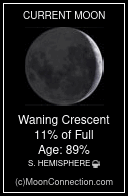Nanjanadu is the biggest Badaga hatti [a village is known as hatti in Badaga language] with over a thousand houses.
Like any typical Badaga Village, the name Nanjanadu is due to the fact that a thorny plant ‘Nanju Mullu’ was found around this village [Dr.Haldorai] when it was established. By the way, no Badaga village has been named after any deity or person by our ancestors.
As in any Badaga hatti, there are many ‘Nattaru’ settled in Nanjanadu. A natta is generally a person from a different hatti but married a girl from the hatti where he is settled before or after marriage . The reason for this could be based on many factors – for eg., there is no male member to take care of the elderly in laws or proximity to work place etc etc.
Over a period of time, the number of Nattaru in a hatti grows to be substantial which results in many marriages are arranged between the ‘hattikararu – original settlers’ and ‘nattaru’.
One of the hattis where this matrimonial inter-actions is quite large is KODHUMUDI. On expressing surprise that a Kodhumudian is married to another Kodhumudian, we realise that there are in fact two distinct factions settled in Mel Kodhumudi and Kiya Kodhumudi, one being largely made of Nattarus and hence with perfect ‘Moray’ to marry.
In Nanjanadu, there are are two factions called A Party [Majority with more than 800 houses] and B Party [minority]. This naming of A and B party is probably is of recent nature after litigation. While it was, generally believed that the B Party people are Nattarus from Porthy and other places, the people belong to B party contest this and claim that they are the ORIGINAL settlers and their ancestors have laid the ‘BALLA Kambu’ – a wooden post – in fact a long trunk of a tree – that was planted by the early/initial settles around which the sacred first house ‘DHODDA MANE’ was built. Of course, this claim is fiercely contested by the A Party.
The planting of Balla Kambu [Kambu Nadodhu] in establishing a new village, existed among early Badaga settlers ‘thousand‘ of years ago.
Badagas are one of the ORIGINAL tribal settlers/inhabitants of the Nilgiri hills. Unfortunately, there are still many researchers, including some Badagas, who keep harping on the ‘unfounded’ theory that Badagas have migrated from Mysore a few hundred years ago. The main reason for their mistaken theory based on empty enthusiasm is based on the simple assumption that Badaga means Northerner. These learned friends are yet to find and give any conclusive evidence of the origin of other tribes, let alone Badagas, like Thodas, Kothas or Kurumas with which the BADAGA TRIBE was intricately interlinked for time immemorial.
It is due to the sad reality that NATTARUs are not treated as equals in many Badaga Hattis. And, that is the basic reason for bad blood being permitted to develop and destroy the basic trust and structure. The jealousy – URI in Badaga – grows many folds when Nattaru are economically better positioned. The hattikararu, sometimes, forget that the Nattaru are having a better life due to their shear hard work.
The so called Nattarus were not accepted as full ‘members’ and not treated as equals, is a matter of fact in Nanjanadu.
Treat Nattaru with respect.
This, could be the first lesson the Badagas will have to learn when we try to solve the Nanjanadu crisis.
[Read more in future posts..]
I am very glad that the above posts have brought in comments from many young friends. These comments are reproduced below and my observations appended below :
1.Murugesh [hmurugesh@gmail.com]
Is it Balla Kambu or Kalla Kambu?
Also I’m asking this question with curiosity. How to treat Natturus? Should we give them all the rights original inhabitants have?
2.Hariharan Emerald Bhojan [ebhari@gmail.com]
Nanjanadu is a good case study for the Badugu Community in the long run. Its a case of how a hatty should be and how it should not be. As a well travelled man but with a strong insight into the Badugu Community, I have my opinions to share, which may or may not go well with the majority but the fundamental basis on which the Badugu Community is built.
Across all Badugu villages, Nattaru have always been accorded respect by the Original inhabitants (Hatti Kattidhavakka) as people who have left their land of birth for various reasons and found refuge in another village. No restrictions have been made on their way of life, accumulation of wealth, intra hatty relationships, so on and so forth. Having said that, certain ancient privileges have always been reserved for the Original Inhabitants as the true sons of the soil, even if they happen to be a minority. Conducting Poojas inside the oldest temple built by their forefathers is one of them. There are lot of other customs in traditional Badugu culture where the Hatty Kattidhavakka (Original Inhabitants) take precedence over the Nattaru (Settlers). Disturbing these tenets which are fundamentally an integral part of Badugu way of life means disturbing the entire social fabric of the Badugu Community. Hence, as learned socially conscious men, it is very important to carry forward this message to Nattaru in the overall well being of the Community. At the same time, the Hatty Kattidhavakka should refrain from violence of any sorts in future and should maintain cordial relations with the Nattaru for a serene, beautiful Nanjanadu.
3.Kumar Bellie [kumarsk10@yahoo.com]
You forgot to mention that, without nattaru there cannot be certain functions/ceremonies conducted as per sasthra. Nattaru is not a low caste.
To answer Murugesh, Balla Kambu is the correct one that is planted when a hatti was established. Kalla Kambu, as the name indicates, is planted later.
As the Dhoddaru Shlokas mention, ‘Natta elladha hatti holla, gasu elladha udhakka holla’ – Nattaru are an integral part of many ancient rites and rituals. These nattaru are respectfully addressed as ‘Mamma’ and ‘guru mane kaararu’ in some cases.
Coming to Emarald Hari’s comments, he has brought out the points that was forming my second part of the article.
There are certain rites, especially during funerals, the Nattaru do not participate in ‘Akki Eththodhu’ and ‘Korambu Kaipadhu’.
Now let us come to conducting ‘pooje’ in the village which is the crux of the problem at Nanjanadu.
In ancient days, Badagas were nature worshipers and the most sacred area of a hatti was/is the Suththu Kallu with a bikkamora. There were no temples in the name of many Hindu Gods in every village. Definitely not more than one temple as is the case now. There were a couple of Bana Gudis deep in the middle of forests to which annual pilgrimage was undertaken by a cluster of villages. The phenomena of temples and festivals based on the deity installed therein, are of recent origin of about 100/200 years. Recent because Badaga Origin is much more than thousands of years.
Even a hundred years ago, one of the original reformers of Badaga Society Hubbathalai Ari Gowder, identified that some of the problems in our hattis were due to temples and temple management. ‘Hattiga Ettu gudi Katti, kettaru Badagaru’. His man FRIDAY – Haikke Maathi would go around the villages to propagate this with his songs and lectures.
Now, every hatti is having atleast one gudi and the main festival of the hatti is based on the temple deity like ‘Rama Navami, Sivaraaththri, Krishna Jayathi etc’ is a hard reality.
In most, if not all hattis, the poojari is a ‘nominated’ person and selected on certain personal attributes [- pure vegetarian, non alcoholic]. Generally, a non-natta person. It is here that we see an avoidable spark that ignited the Nanjanadu crisis.
I strongly believe that when we go to a temple, our faith is in the deity/GOD of that temple. Think of Palani or Thirupathi. As Dr.Sundaradevan mentions, do we know who the poojari is in those temples?
The painful question that begs for an immediate answer is, a village that was peaceful for many centuries, becomes a hotbed of debates and disputes after a temple is constructed/renovated in late 1980s over who should conduct the daily poojas.
Did the ‘A and B parties’ let a minor point to blow out of proportions by insisting that one among them should be the Poojari?
Or, is the dispute much more fundamental in deciding who are the Hatti Kattidhavakka and who are the nattarus in Nanjanadu.
The Nanjanadu Peace Committee has its hands full.


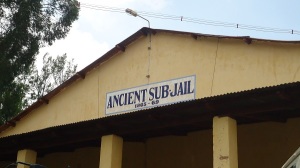 The prison name board
The prison name board The high ceiling prisoner’s room with tiny skylight
The high ceiling prisoner’s room with tiny skylight The hangman’s room
The hangman’s room










 Mookuthi
Mookuthi  Chinna
Chinna 






 ==
==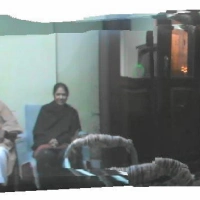
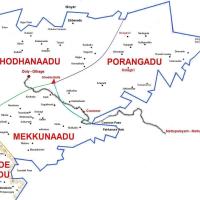
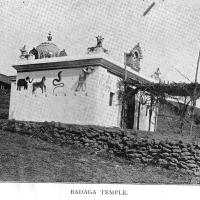
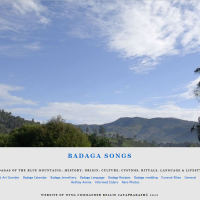

![Seemae [See'may] & Morae [Mo'ray] (relationship)](https://i0.wp.com/badaga.wordpress.com/files/2008/11/nakku-betta1.jpg?resize=200%2C200)






































